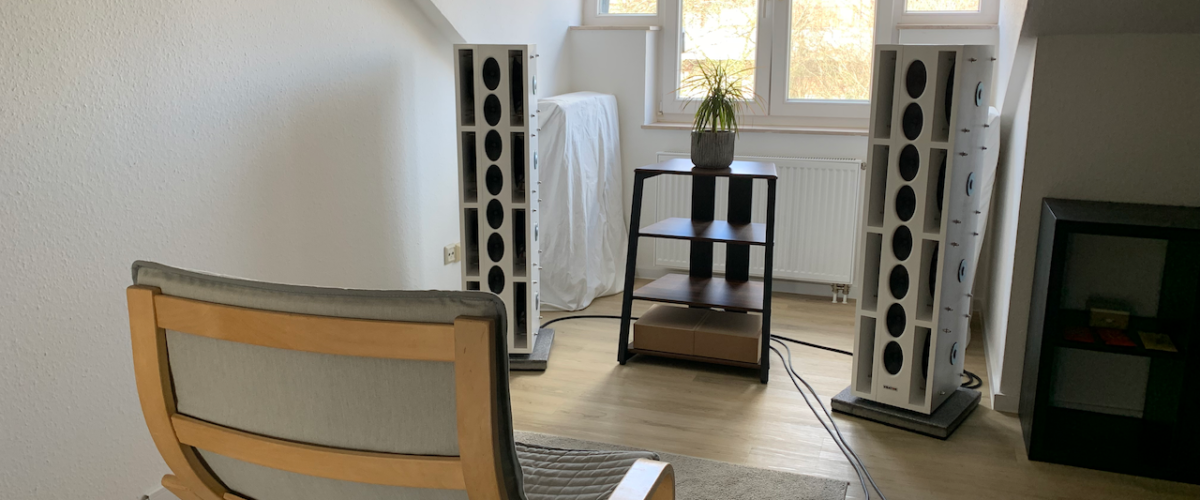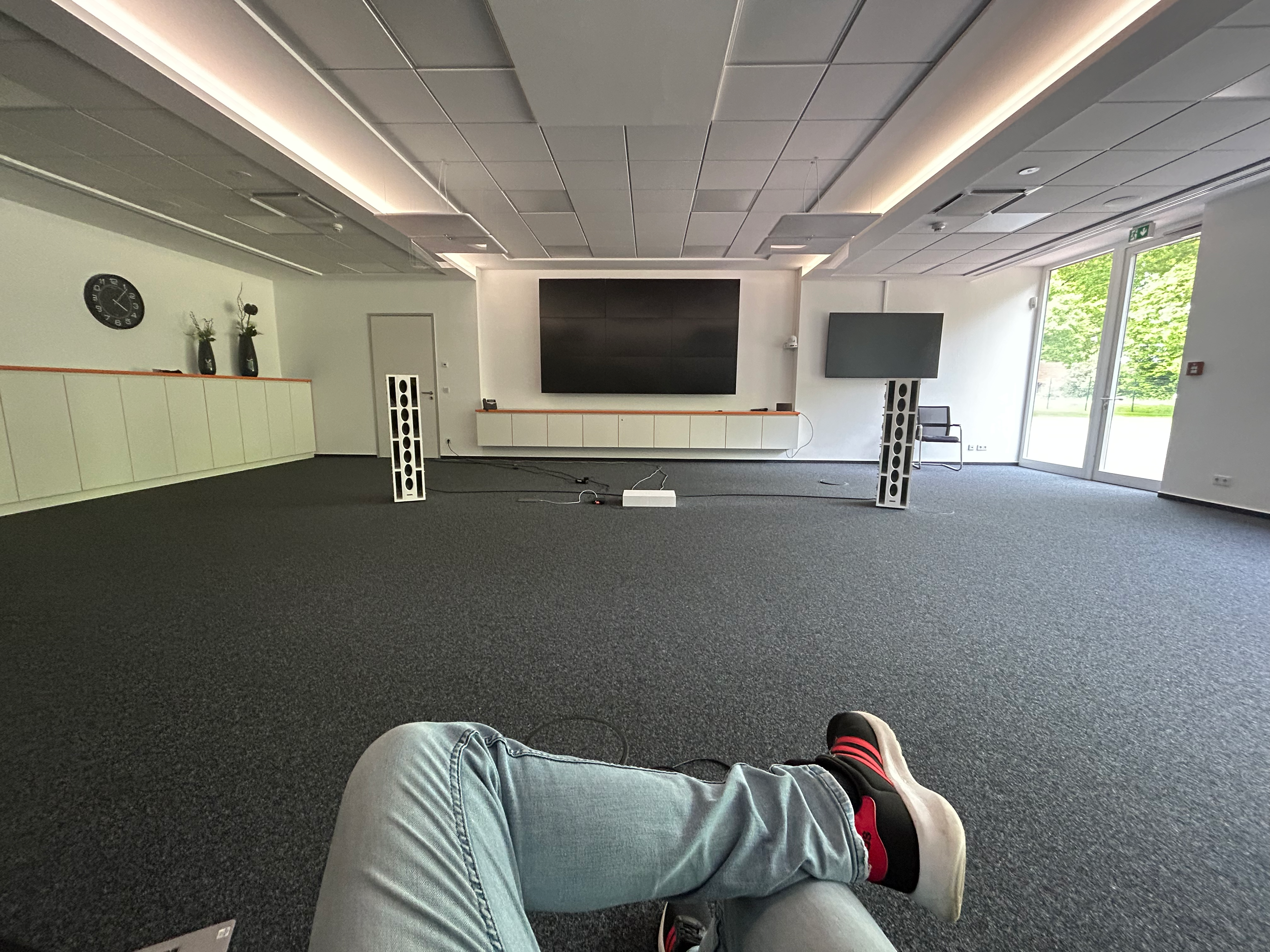Grand Orgue measurements
After I finally finished building the Grand Orgue, it was time to find the right place for it – with the help of some measurements.
For this I used the measurement microphone that came with my dbx controller. I’ve read that it’s not the best microphone for this purpose, but it should give us a little more insight into the speakers and their placement.
To supply phantom power to the microphone, I used the Yamaha mixer on my PA system, which has built-in phantom power for microphones. I just needed an audio interface to connect it to my Mac. Fortunately, I still own a really cheap Behringer UCA-222 audio interface that I bought when I was 17 years old. And wow – IT STILL WORKS!!! 😍
Since I’ve never done this before, I followed this tutorial on YouTube for the measurements. The guy used Audionet-CARMA for this, which I recommend because it’s not overloaded with features. So you can quickly find out what is needed.
You’ll see little wooden boxes connected to the speakers. These are the crossovers that don’t fit into the speakers themselves. So there’s a two-pin cable that goes inside the boxes, and a four-pin cable that comes out of the boxes to the speakers.
First measurement: Center of the room
First, I tried to place the speakers as far away from each other as possible and at least 50 centimeters away from the back wall. In this scenario, the right speaker has about 2 meters of space to the windows, while the left speaker, on the other hand, is close to the left corner of the room:
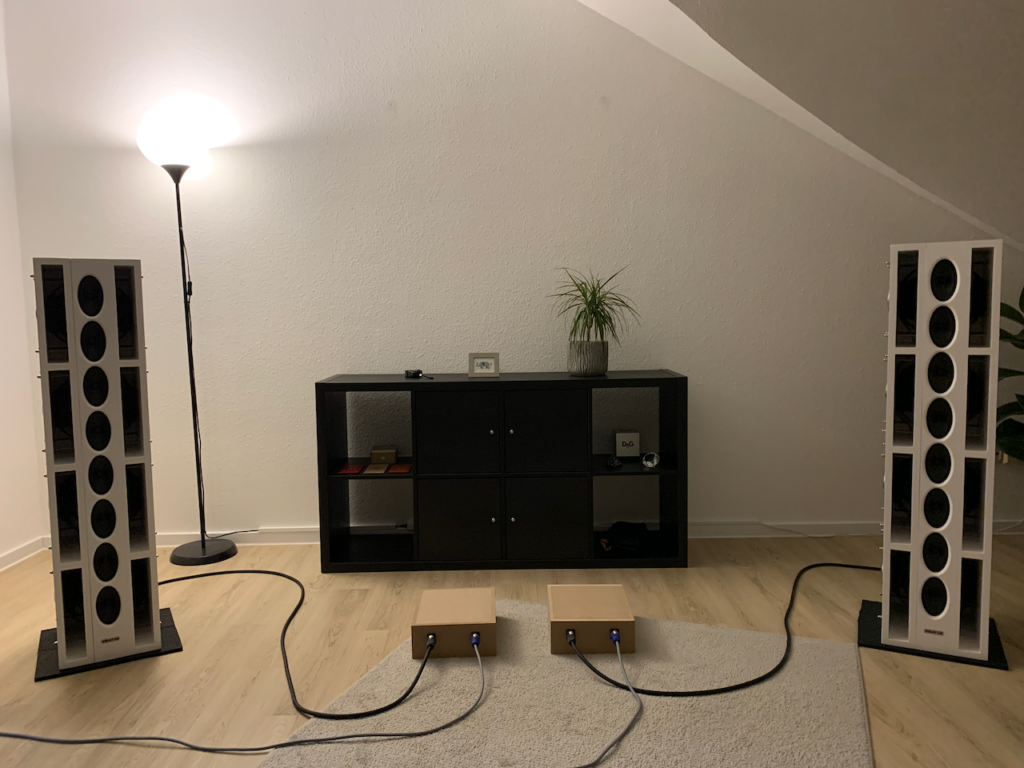
This looked good, however, the left speaker gets in the way as soon as I open the bedroom door.
With this placement, the measurements look like this:
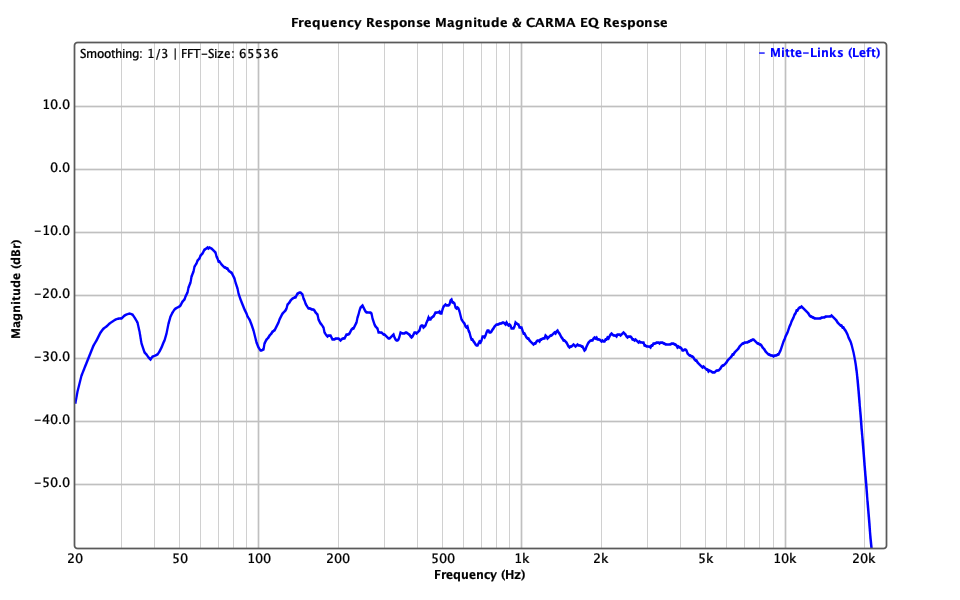
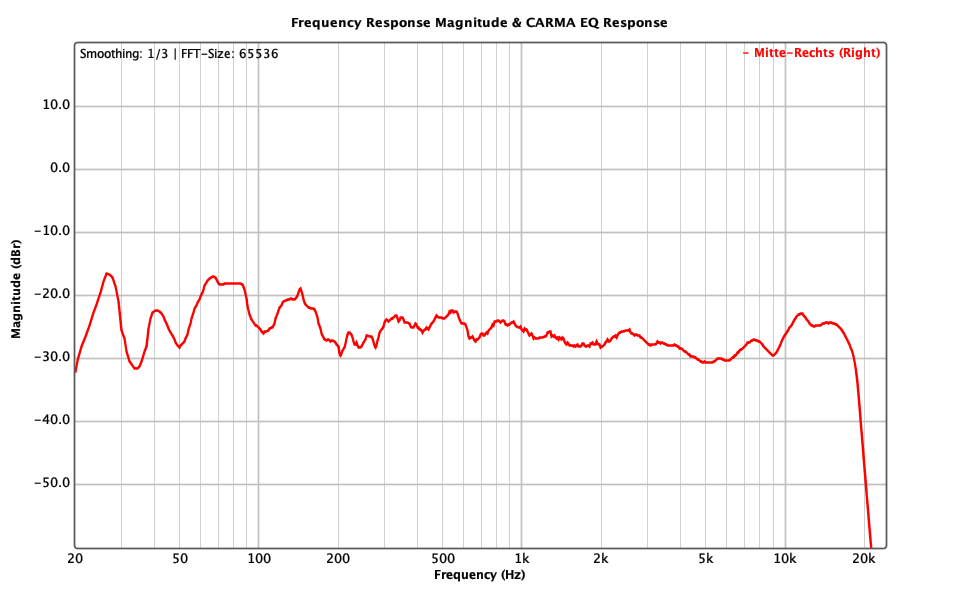
Wow, that looks… not good. You can clearly see the peak around 65 hertz for the left speaker, which is also quite audible. It sounds “boomy” from the left. For the right speaker, I’m not even sure how to interpret this roller coaster ride. In the mid and high frequencies, it sounds very bright and wide for both – which is really nice. It feels like you’re sitting in front of a big orchestra.
Also, you’ll notice the peak in both speakers starting at 10 kHz. The reason is that only 2 of the 8 tweeters are used for the high frequencies, and they are right at the height of the microphone. The mid frequencies, on the other hand, are distributed among all 8 tweeters in a line array, but the microphone can only capture well those that are at its height.
Second measurement: Window corner
Since the poor measurements in the lower frequency range were clearly related to the room situation, I wanted to try a position where both speakers had the same distance to all sides of the room – so I tried the window corner.
To achieve decent volume levels down to the low bass area, the speakers should be placed at least one meter away from the wall. One magazine even talks about 3 meters. Unfortunately, I can not provide this space, but I wanted to achieve at least one meter.
Here, both have the same distance from the back and sides of the room. They are now about 1 meter from the back wall, but only 10 centimeters from the sides. The disadvantage of this placement is that they are also relatively close together:

The measurements look as follows:
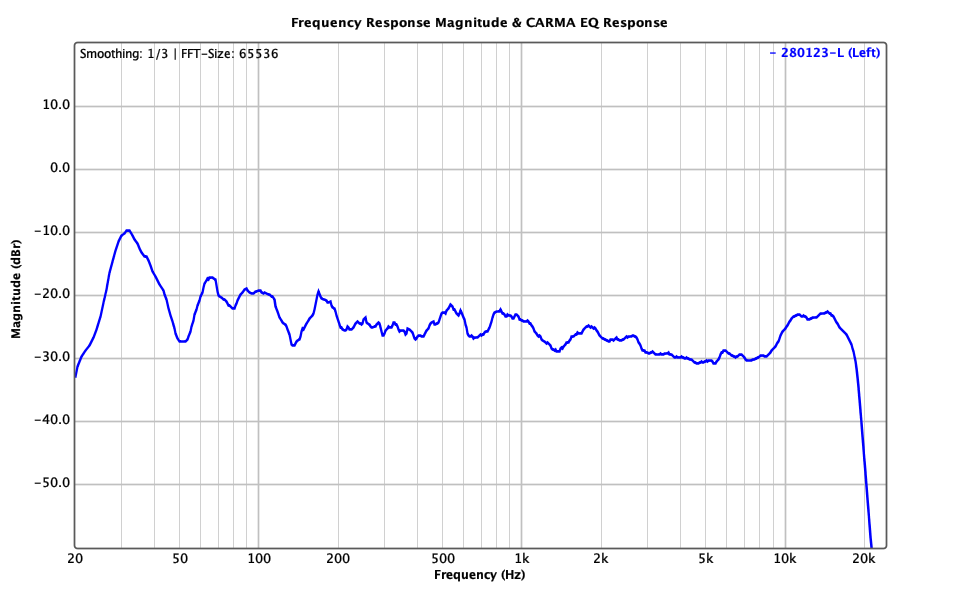
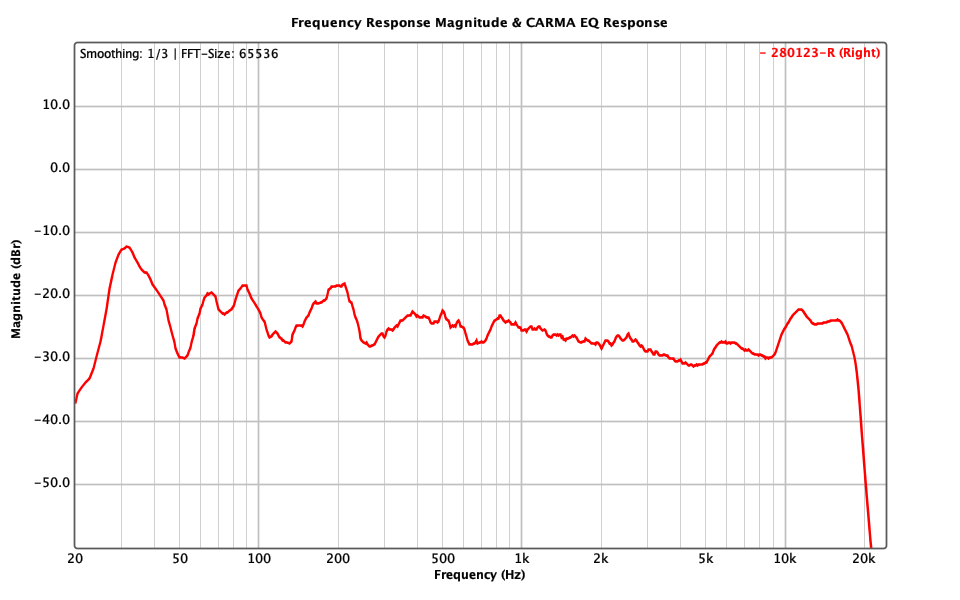
You will notice that the results of both speakers look more similar than before, since both are exposed to the same room influence. The “boomy” sound around 65 hertz from the left speaker is gone, instead we now have an overdose of bass. Frequencies around 30 hertz are almost 15 dB louder than the rest, which again is clearly audible and makes the floor shake.
Bass heads will surely love it, but it’s a bit too much for my taste. Also, the width is not comparable to the wider set-up. It doesn’t feel like you’re sitting in front of an orchestra anymore. Instead, the palm sings to you. We have a relatively small sweet spot here.
And now?
I even tried to build myself sound absorbers for the 30 hertz problem (see second picture), but unfortunately that didn’t affect the sound at all. Now I have two large rock wool pillows in my bedroom that look terrible and don’t help. 😂
I guess it really is primarily about placement here – and these speakers are really picky about where they are placed. Unfortunately, I don’t have a single straight wall in my entire apartment, as I live in the attic.
So I’m not sure how to solve the problem, but I’ll keep working on it. Be curious!

